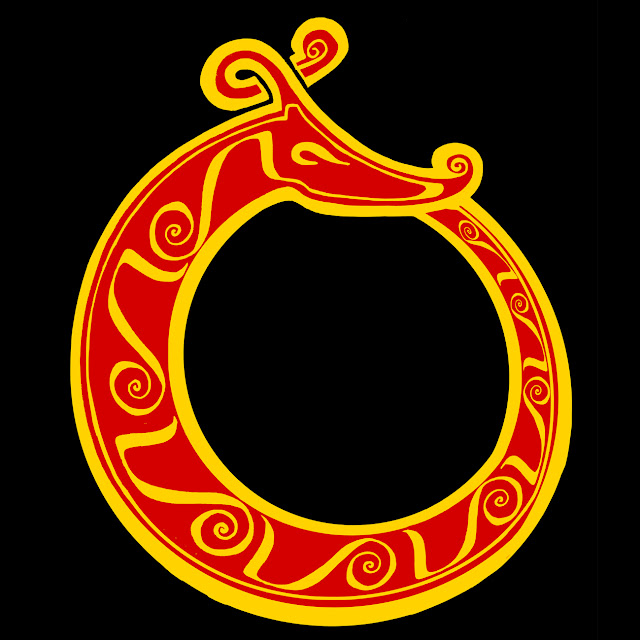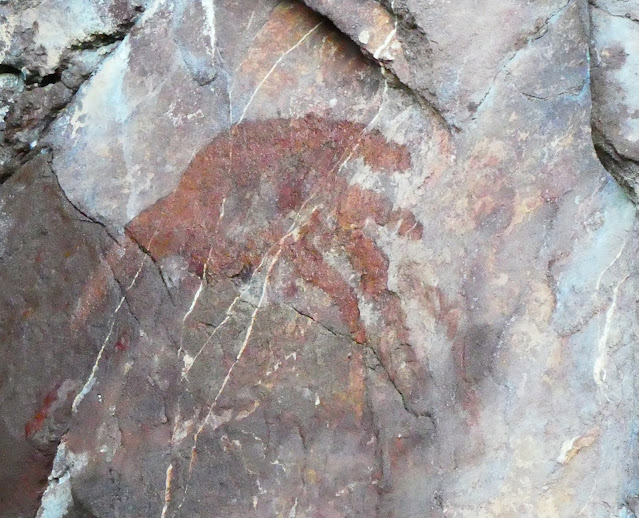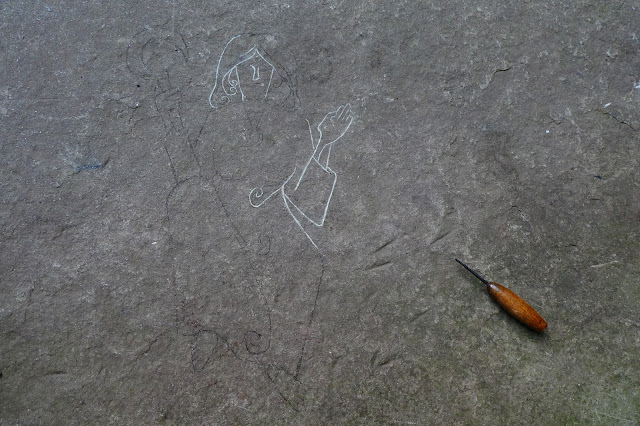Around and Around...
The ouroboros - an ancient symbol of fertility, totality, eternity, being a serpent or dragon chewing its own tail. The design below is a 'cleaned up rough' of the first visualization I created for this project, last autumn, and grew out of a sketchbook scribble originally planned to be a collaboration with a metalworking student, aimed at producing a brooch or similar piece of physical jewelry design:
With its horn or antler, the design also echoes the hybrid beasts of Celtic/Pictish design, and my own 'cosmic beast' which is supposed to embody attributes of all animals, being the progenitor of all species. The design is also intended to look in two directions at once, in something of an Escher-like visual paradox - the tail curving around in one plane to be held in the mouth, but also suggestive of moving away from the viewer and ending up behind the snake's head, hinted at by the distortion applied to the bodily decorations, and the fact the inner space is not a perfect circle, but a slightly deformed ellipse.
Last night, as I finally completed the first full draft of the epic poem The Gyldlandsaga, I realised that it is a dragon (serpent-kin) which creates the whole saga - and which also helps to conclude it, at the final climactic battle. This significance made me return to the symbol of eternity which I'd almost completely forgotten about until now, and which even suggested itself as a means of physically arranging the exhibition, so that the viewer/visitor is brought around in a circle (or cycle - as natural cycles, such as lunar phases, play a very prominent role both visually and textually in the works), from beginning to end. I'm not sure how this could work in the limited physical space, but it might be easier to arrange for the online exhibition. It also suggests a very obvious and meaningful application, as a design for both the title page, and the final page, of the printed book. In this sense, the eternality of the saga-cycle is made explicit - the hero's journey is one we all undertake, with friendly and hostile encounters along the way, and the ending is as bitter, or sweet, as we choose (or are capable of making it). In the climactic battle scenes, the re-appearance of the dragon (absent since the early pages of Book 1, some 65,000 words previously) overturns everything, as does the revelation of the dragon's origins and gender (hitherto assumed by all the characters in the narrative to have been male - for some reason).
The ouroboros also has its colleague in Norse mythology in Iormungandr, the serpent-son of Loki who encircles the entire middle-earth of mortals, thus providing Thor with one of his more entertaining adventures. It is also related - visually - to the Celtic and Norse design of the 'endless knot', which is representative of the cyclical form of nature, time and life/death.




Comments
Post a Comment